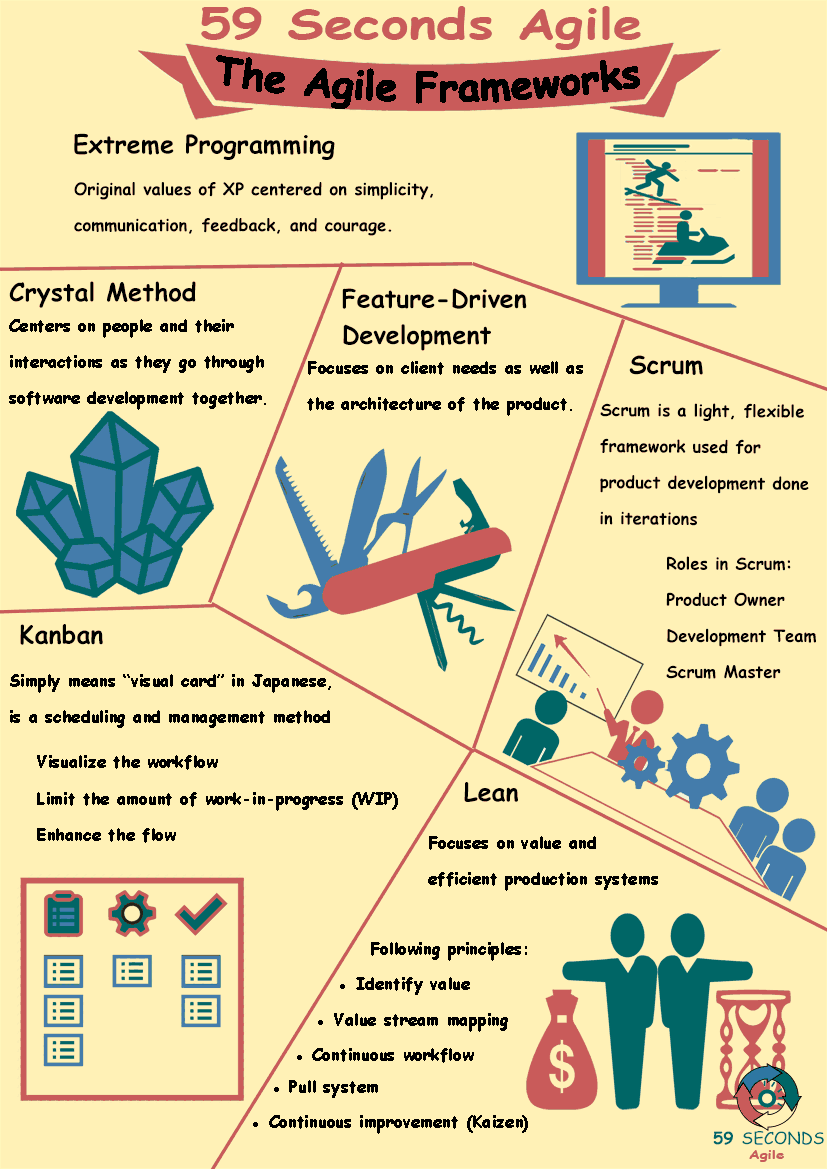This article discusses ‘What is an Agile Framework’ and looks to provide an insight into what an Agile Framework is and how to use them. This article also introduces some of the different Agile Frameworks such as Crystal Clear.
Agile Development Frameworks
A 59 Seconds Agile Training Video
Continue to Part 4 Below
Agile Development Frameworks
A 59 Seconds Agile Article
Crystal Clear
Fed up with the traditional methods, your manager decides to try a new project development style. After researching the options, they decide that putting crystal clear into practice will work the best for your situation.
Crystal clear depends on the frequent delivery of working and tested code to the users, which will solve your problem with being overwhelmed by new bugs. It also relies on reflective improvement, which means that the team always assumes that there’s hope for a project even if it’s not going well. In crystal clear, the team members all sit together so that they’re privy to any information being passed around by the group.
You might be wondering what makes crystal clear special, or how it’s different from the other agile frameworks. Crystal clear is particularly good for small businesses that want to grow, because of its focus on people and how to improve as a team.
Crystal Clear Feedback
Other unique attributes of crystal clear include personal safety, or the feeling that any member of the team can speak without fear of ridicule; focus on the work you need to do and being in a position to just get to work; easy access to experts, or the ability to get feedback from the people who will actually be using the product; and automated tests to help catch errors before they become bigger issues.
You might also be wondering exactly how crystal clear will help your projects improve. Think back to the example of the buggy software. Crystal clear is a good framework for any size project because it emphasizes communication, so that would have helped solve your problems of not being able to work closely with your team. Crystal clear also includes regular team meetings, so issues can be fixed before they begin to impact the project schedule.
The details of the project are also left unstated, so that changes can be made to the product farther along in the development process. If you’d been using crystal clear in the earlier example, you would’ve been able to work through the problems with product issues and scattered team members.
Continue Reading —> Next
The Agile Development Frameworks
A 59 Seconds Agile Video Animation
Continue Reading —> Next
User Stories Applied
A 59 Seconds Agile Book Review
User Stories Applied by Mike Cohn is one of our favourite books on Agile User Stories. The book starts with an overview into user stories, and details what a user story is and the different aspects of them. He then discusses how to go about writing a user story, and provides details of the INVEST criteria that can be used to determine if the story is meeting all of its objectives. Next Mike gives an in depth discussion of who user stories are written for and where to begin when gathering the details for them. The book then discusses acceptance testing user stories, including how to go about specifying these criteria and the responsibilities of the development team and customers during this process.
Continue Reading —> Next
The Agile Frameworks
A 59 Seconds Agile Infographic

Continue Reading —> Next
Agile Scrum Master Training Course
Our Favourite Agile Books
We found these books great for finding out more information on Agile Scrum:
Continue Reading —> Next

